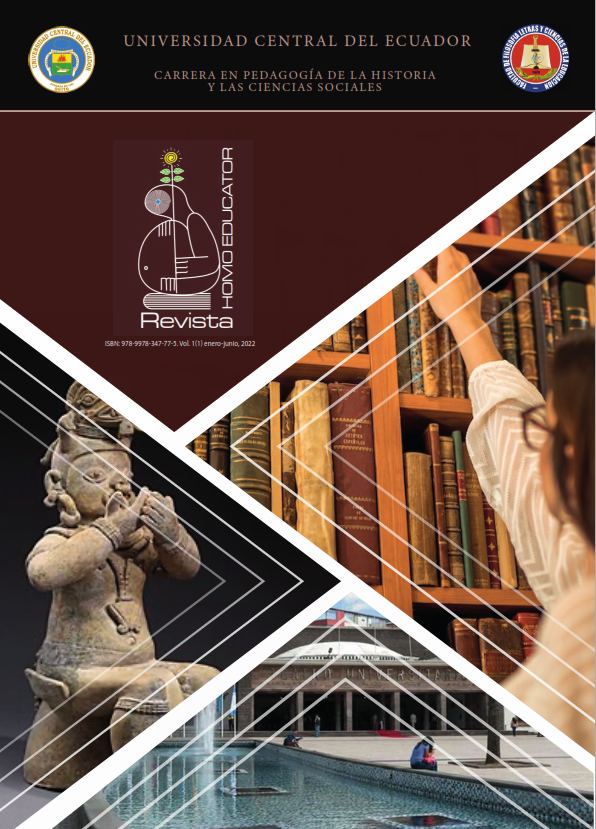Sun party in the middle of the world
Keywords:
Worldview, Inty Raymi, Syncretism, Festivity, RevitalizationAbstract
Inty Raymi, or festival of the sun, is one of the ancestral traditions of the Andean people that has been transmitted from generation to generation and that marks the cultural syncretism of the indigenous people of Ecuador. This ancient heritage is symbolized through ceremonies, ritual dances and sacrifices that interrelate the elements of the geographical environment and the cosmos, in order to honor the presence of the sun on earth by the harvest of fruits, being the main product corn, considered the basis of the food of the Andean people; and the search for balance with nature which allows the order of what exists. Therefore, it is necessary to analyze and describe the different elements, offerings, meaning and characters, which give the colorful touch to the festivity; configured the rituality and religiosity present in the Andean worldview. Currently, it is part of the material and intangible heritage of our culture. Based on a theoretical – documentary reflection, it is intended to describe the ancestral festival of Inty Raymi that is a fundamental part of the Andean worldview, and that shows the cultural richness of the different indigenous people and communities of the region that, from pre-Hispanic times remain valid as part of its ideological legacy, and that through oral memory and ethnic struggles over the last 30 years, they have recovered and have given value part of their traditions, amidst of a constant cultural transformation - globalized imposed by elites, that instead of suppressing the ancestral memory, it has given strength to the cultural revitalization of our people.
References
Agencia de Noticias Andina. (21 de Junio de 2019). Inti Raymi: Así fueron los orígenes
de la fiesta en el Cusco. Obtenido de [Entrada de Video]: https://www.youtu
be.com/watch?v=hxfWjRQ26y4
Ariruma, K. (2019). Inti Raymi: la fiesta sagrada de los kichwa runa. Quito: Uni
versidad Andina Simón Bolívar. Obtenido de https://repositorio.uasb.edu.ec/
bitstream/10644/6674/1/CON-PAP-Kowi%2c%20A-La%20fiesta.pdf
Casa de la Cultura Ecuatoriana. (2019). AYA HUMA, EL ESPÍRITU QUE GUÍA. Obtenido
de [Post de noticias]: https://casadelacultura.gob.ec/postnoticias/aya-humael-espiritu-que-guia/
Confederación de Nacionalidades Indígenas del Ecuador. (19 de julio de 2014). KITU
KARA. Obtenido de Confederación de Nacionalidades Indígenas del Ecuador:
https://conaie.org/2014/07/19/kitu-kara/
Diario El Norte . (08 de Julio de 2018). La ‘Rama de Gallos’, una tradición que se niega
a desaparecer. Obtenido de elnorte.ec: https://www.elnorte.ec/la-rama-de-gal
los-una-tradicion-que-se-niega-a-desaparecer/
El Comercio . (01 de Julio de 2014). Corpus Christi e Inti Raymi. Obtenido de Elco
mercio.com: https://www.elcomercio.com/opinion/corpus-christi-inti-ray
mi-juan-valdano-ecuador-tradiciones.html
Guayasamín, G. (2019). La cruz del tiempo. Teoría astronómica sobre el calendario sol
ar quiteño. Quito: Universidad Técnica Particular de Loja. Obtenido de https://
issuu.com/studiahumanitatis/docs/cruztiempo
Guerrero, P. (2002). La Cultura. Quito: Abya-Yala.
Gutiérrez, I., Hinojosa, M., Allen-Perkins, D., & Díaz, D. (2016). Inti Raymi. La del Sol.
Cannabis Magazine, 96-103. Obtenido de https://www.researchgate.net/publi
cation/303749480_Inti_Raymi_La_fiesta_del_Sol
Los Andes, Periódico Regional. (22 de Junio de 2021). Inti Raymi, la fiesta para agrade
cer al Sol y la Madre Tierra. Obtenido de Diariolosandes: https://www.diariolo
sandes.com.ec/inti-raymi-la-fiesta-para-agradecer-al-sol-y-la-madre-tierra/
Olaechea, J. (2019). Inti Raymi: Oda al Sol y al planeta. Obtenido de Portal Andina : ht
tps://portal.andina.pe/edpespeciales/2019/inti-raymi/index.html
Vega, J., & Guzmán, L. (2005). EL INTI RAYMI INKAICO, LA VERDADERA HISTORIA DE
LA GRAN FIESTA DEL SOL. UNMSM. Museo de Arqueología y Antropología,
(1), 37-71. Obtenido de https://sisbib.unmsm.edu.pe/bibvirtual/publicacio
nes/antropologia/2003_n01/a05.htm
Yungán, R. (s.f.). Ciencia Andina. Ministerio de Cultura del Ecuador

